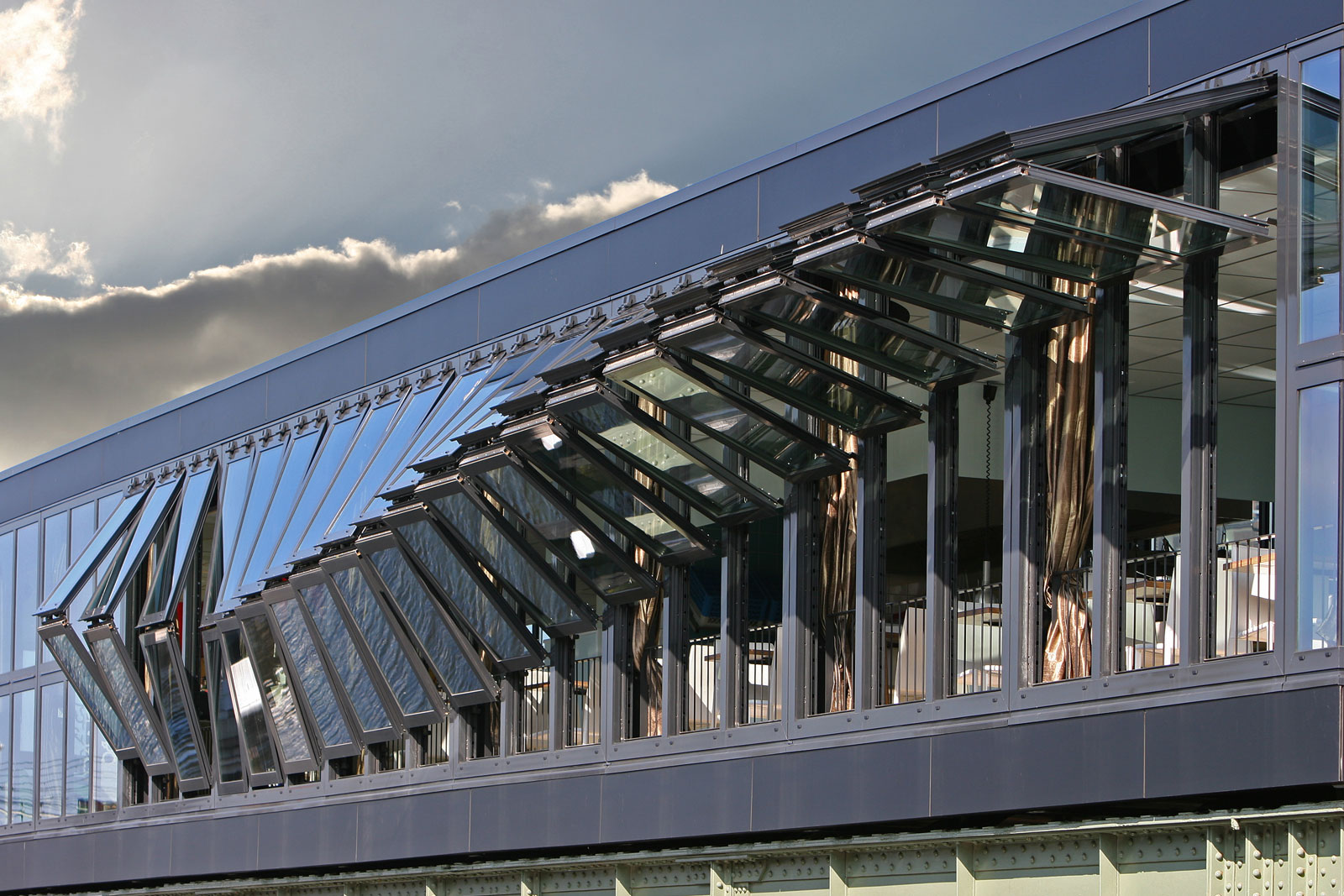An Interactive Respond in the Physical Form – Building Kinetics

Project: Cafe-restaurant OPEN, Amsterdam
Architect: de Architedkten Cie
Year of Built: 2006
As an architecture student with technological enthusiasm. I’ve been seeking out when buildings, while usually being static, are able to react and respond to its environments. And one of the most signitured projects is the Cafe-restaurant OPEN building designed by CIE in Amsterdam. Though the number of people who worked on this project is not specified officially, something of this scale usually consists of a team of fewer than five people. However, the actual construction members certainly would reach beyond two figures.
This project took them over an year to finish, which is not too long for an architecture project. The main features of the installment is the pivoltal window panels that are controled by electric motors. However, it’s reasonable to make the assumption that the operating terminal is programed in analog transimission rather than digital, as the actual usage of the feature wouldn’t require very sophisticated I/O exchanges. Nevertheless, the designing of the prototypes will require some digital design tools. A very common one in the field is Rhinoceros with Grasshopper plug-in. It used programmable components to create building part simulations that act as expected, which will shorten the time for not having to create physical representations that does the same thing.
Though the interacting process is rather simple, it’s of a great significant importance for the practice of architecture to incorporate interactive ‘devices’. There are a handfull of kinetic precedents that would’ve inspired the creator of this project. Most of them had thinkings toward the active building components that can adapt its spatial and micro-climate conditions to the environmental changes. It’s adopted as both an expressive architectural language as well as a functional approach.

![[OLD FALL 2018] 15-104 • Introduction to Computing for Creative Practice](https://courses.ideate.cmu.edu/15-104/f2018/wp-content/uploads/2020/08/stop-banner.png)